- Home
- Ian Buruma
Year Zero Page 14
Year Zero Read online
Page 14
The Allies decided to act. P. J. G. Huijer, a Dutch navy captain, was sent into the city to prepare the way for an Allied landing. Quite naturally, his arrival was seen as a further provocation. Arms kept flowing from Japanese arsenals to the pemuda fighters. On October 25, about four thousand British troops, mostly Indians and Nepalese Gurkhas, came ashore. Rumor had it that these soldiers were Dutchmen in blackface. They were attacked by a ragtag army of Indonesians. Afraid that their troops would be massacred, the British asked Sukarno and Hatta to come down and control the mobs. They complied, and had some success. The cease-fire held, more or less, until October 31 when the British commander, Brigadier General A. W .S. Mallaby, trying to intervene in a fight, was shot by Indonesians.
This time it was the British who sought retribution. For the next three weeks, beginning on November 10, Surabaya was bombed, shelled, and strafed. An eyewitness described the scene in the center of the city:
Bodies of men, horses, cats and dogs, lay in the gutters, broken glass, furniture, tangled telephone lines cluttered the roads, and the noise of battle echoed among the office buildings . . . The Indonesian resistance went through two phases, first fanatical self-sacrifice, with men armed only with daggers charging Sherman tanks, and later in a more organized and effective manner, following closely Japanese military manuals.64
By the end of November, Surabaya had been pacified at the cost of being reduced to a bombed-out battleground reeking of the corpses of Indonesians, Indians, British, Dutch, Indos, and Chinese. It would not be until 1949, after further acts of vengeance, not least from the Dutch, who in 1946 sent death squads led by Raymond “Turk” Westerling into South Sulawesi, where thousands of civilians were murdered, that Indonesia achieved full independence. (Westerling, incidentally, who had fought the Germans in North Africa during World War II, later became a devout Muslim.)
Blood, however, will have more blood. In addition to accusing Sukarno of treachery, the Dutch saw him as a front man for the communists. Exactly twenty years after the Battle of Surabaya, officers in the Indonesian Army ousted Sukarno in a military coup, supposedly to prevent the communists from taking over Indonesia. This marked the beginning of a nationwide purge of communists. Muslim vigilantes, armed youths, army battalions, Javanese mystics, and ordinary civilians all took part in the killing of half a million people, many of whom were Chinese. The leader of the coup, and the future president of Indonesia, was a Major General Suharto. Trained by the Japanese military, and thoroughly indoctrinated against Western imperialism, Suharto had fought against the Dutch in 1945. His presidency would last for thirty-two years. During that time, as a staunch opponent of communism, he enjoyed the warm and unwavering support of all Western powers, including, of course, the Netherlands.
• • •
THE FRENCH WERE AS FEARFUL as the Dutch of losing their colonial possessions in 1945, and, if anything, felt more humiliated, not just because of their defeat in 1940, but also because of their history of official collaboration. French Indochina continued to be administered by a Vichy-oriented colonial government during what was, in fact, a Japanese occupation. The Japanese used the colony as a military base, while the French carried on drinking their apéritifs at Saigon’s Cercle Sportif and generally minding their own business. But this sweet life came to an end in March 1945. Once France was liberated, French collaboration with Japan could no longer be taken for granted, so French troops and officials were swiftly imprisoned in Saigon and Hanoi.
When defeat was almost certain in the first week of August, the Japanese transferred political authority to the royal government of Vietnam, while the communist Vietminh (League for the Independence of Vietnam) took control of the north. A few weeks later, with Chinese troops pouring across the northern border and the arrival of British troops imminent in the south, both the emperor of Vietnam, Bao Dai, and the Communist leader Ho Chi Minh made it quite clear that whatever happened, the resumption of French rule was unacceptable. Statues of French colonial dignitaries were already being pulled down in Hanoi. On September 2, more than three hundred thousand Vietnamese gathered on Ba Dinh Square, near the former French governor-general’s palace, to hear Ho Chi Minh declare national independence. Bands played communist marches, including harsh words about “drinking French blood.” Vietminh soldiers, armed with pistols, guarded the speaker’s platform, festooned with red flags. A royal umbrella was held over “Uncle” Ho’s head, as he softly spoke into the microphone: “Countrymen, can you hear me?” The crowd hollered back that they could.
A U.S. intelligence officer who witnessed this event reported to his superiors in the southern Chinese city of Kunming: “From what I have seen these people mean business and I am afraid the French will have to deal with them. For that matter we all will have to deal with them.”65 He couldn’t have known quite how prophetic his words would turn out to be.
If the French, many of whom remained in their prisons, still guarded by Japanese soldiers, were spooked by these events, French colonizers in Algeria were panic-stricken. Both Algeria and Indochina were experiencing serious famines in early 1945, the result of droughts as well as the diversion of food supplies for military purposes. In Indochina more than one million people died of hunger. In Algeria, hunger was fueling a popular rage that was seen by frightened Frenchmen as the beginning of a violent revolution.
In fact, despite some agitation among Algerian communists and radical nationalists, most Algerians simply wanted equal rights. But every time a Muslim stone was thrown at a French settler, the French thought that the “Arab revolt” was at hand. The new colonial administration in 1945 was led by French leftists, many of whom had actively resisted the Germans. Many of the settlers had been pro-Vichy, and were fiercely anti-Semitic. (Often the only ones who had defended the rights of Jews under French rule were Algerian Muslims.) Yet the Muslims who called for Algerian independence or equal rights were quickly branded as “Nazis.” This was like calling Indonesian and Vietnamese demands for national independence part of a Japanese fascist plot. It made it easier for leftist colonial authorities, as well as former Vichyistes, to crack down on them.
Violence had been mounting steadily in Algeria, especially in the famine-stricken areas around the town of Sétif in the northeast. Settlers clashed with nomads, arrogant police officers were chased out of villages, right-wing European youths taunted Muslims in Algiers with cries of “Vive Pétain!” or even “Vive Hitler!”, and French policemen shot into a crowd of Muslims who wished to take part in a May 1 demonstration.
Sétif, the center of Muslim agitation and Algerian nationalism, was a logical place for serious violence to explode. On May 8 the French, despite their former allegiances, decided to celebrate the Allied victory over Germany with full patriotic pomp. Early that same morning, Muslims, mostly rural people, men as well as women and children, gathered in front of the main mosque. Some men carried traditional daggers under their jellabas. Some had pistols. Leaders of the AML (Amis du Manifeste et de la Liberté, or Friends of the Manifesto and Liberty), the Muslim organization for equal rights, assured the authorities that this was not a political demonstration. There would be no nationalist banners.
By eight o’clock the crowd had grown to about three thousand and began to march along the Avenue Georges Clemenceau to lay a wreath at the war memorial. Despite promises to the contrary by the AML, banners were unfurled by some nationalists, reading: “We want the same rights as you.” When policemen at a roadblock saw a banner that said “Long live Algerian Independence,” they tore it from the hands of a poor Algerian, who was killed on the spot. Whereupon French civilians, as though they had waited for this moment, started firing submachine guns into the crowd from their balconies and the windows of the Café de France. Between twenty and forty people were killed. Terrified by the shooting, Muslims rushed into the side streets, using their pistols and daggers to attack Europeans. The French communist leader Albert Denier was so badly cut that
his hands had to be amputated.
A French teacher recalled having a drink at a café opposite her school, when “a flood of screaming natives appeared from all sides, with daggers in their hands. They were running towards the Arab market. Atrocities had been committed. I saw about fifteen of them beat an old friend of the Arabs, Mr Vaillant, with clubs . . . It’s terrible when you think about it. The odd thing is that most of the victims were Arabophiles.”66
News of the killings swiftly reached the villages. Vengeance was sporadic, but brutal: “We were armed with knives and rifles. It was my father who killed the baker because he was French. We broke down the doors, burning down the houses with the oil and petrol that we found.”67 French settlers fled to local police stations. Some who were caught were mutilated with knives, had their breasts slashed or their genitals stuffed into their mouths. About one hundred Europeans were killed in three days.
Instead of urging calm, the socialist governor-general Yves Chataigneau called for ten thousand troops: Moroccans, West Africans, and Foreign Legion units. This would not just be an exercise to restore order. A lesson had to be taught. The killings of French citizens had to be avenged.
French settlers formed militia units and started assaulting the local population. One of the toughest infantry regiments, manned by Algerian soldiers, was shipped back from Germany where they had fought hard to defeat Hitler. In their native country, they were sent into the hinterlands to hunt fellow Algerians. By the end of June the countryside was petrified into an awful silence. Villages and towns had been bombed for weeks from the air and shelled from cruisers; thousands had been arrested, often tortured, and executed. The exact number of Algerian dead is not known. Some say up to thirty thousand. With murder came deliberate humiliation. A nineteenth-century practice of making natives submit ceremonially to their conquerors was revived. Thousands of famished peasants, who could no longer stand the bombings, were made to kneel before the French flag and beg for forgiveness. Others were pushed to the ground and made to shout: “We are Jews. We are dogs. Long live France!”
To some Frenchmen it may have looked as though normality had finally returned to Algeria. But the more sophisticated ones, including General de Gaulle, knew perfectly well that mass-murdering native populations was an embarrassing blot on La France éternelle, which, in official mythology, had so bravely resisted the Nazi menace. So what happened in Sétif and surrounding areas was smothered in official silence for many years.
The French in Saigon, however, read Sétif as a warning of what could happen to them if aspirations for Vietnamese independence were not quickly stifled. In August things did not look good for the French. Many were still in Japanese prisons. The Vietminh were given, or simply took, more and more Japanese arms. Some Japanese military officers were joining the Vietminh, either out of conviction (“Asia for the Asians”) or because they needed a place to hide from prosecution for serious war crimes. French imperial designs were not popular with the Americans, even though the Chinese, still under Chiang Kai-shek’s Nationalists, had no objections to French rule in Indochina. The only ones who were entirely on the side of the French, not so curiously, were the British.
Mob violence often begins with a rumor. So it was on September 20 in Hanoi, when people spoke of a French plot, assisted by Vietnamese members of the French colonial security police, to regain control. Caches of arms were supposed to have been found. There was talk of poison gas. French soldiers had been released from prison by the Japanese, and even rearmed. To foil these dark French designs, thousand of Vietnamese, armed with knives, spears, and machetes, ransacked French homes and molested any French people found in the streets. Japanese soldiers mostly just stood by.
The waiters in the best hotel in Hanoi, the Metropole, attacked the guests in their rooms and barricaded them in the dining room. A Frenchman who managed to escape asked the Japanese to relieve the French prisoners and restore order.
Françoise Martin was a young French woman who had arrived in Hanoi “not to make money in this country, but, on the contrary, filled with humanitarian idealism.” She felt nothing but “respect for the Sino-annamite culture.” Yet her sentiments about the Vietnamese who demonstrated in the streets for independence were probably typical of most French colonials: “It is possible that there were real patriots among them . . . But so far as this mob of criminals and imbeciles bustling about town with their flags is concerned, the sight of half a dozen guns would send them scurrying back to their rat holes. Unfortunately, we don’t have half a dozen guns, nor would we have them soon.”68
In August, there had been more rumors about stockpiles of arms found in a French villa. Demonstrators denounced French imperialism. But apart from some murders in the countryside, Vietnamese violence against the French did not amount to much. The French were terrified nonetheless, all the more because they were still so helpless, despite brave words from France, where General de Gaulle spoke of developing Indochina as “one of the principal goals of [France’s] activity in her reborn power and rediscovered grandeur.”69
“Everyone is armed to the teeth,” recalled Françoise Martin about the situation in Hanoi, “Americans, Chinese, Annamites; only the French have nothing to defend themselves with except sticks and empty bottles . . .”70 Her analysis of the Vietnamese fight for independence was as typical of her place and time as her views of the “imbecilic” demonstrators. It was all a plot: “Officially, Japanese had laid down their arms, but continued to wage war in a different manner, impeding any revival of Europeans in Indonesia and Malaya; everywhere their methods were the same: a perfidious plan, admirably prepared, carefully carried out . . . An admirable and new example of Asian duplicity, which never fails to fool the White man.”71
When violence finally broke loose, however, it wasn’t in Hanoi, but in Saigon. The first sign of serious trouble was remarkably similar to events in Algeria. On September 2 hundreds of thousands of Vietnamese, or “Annamites” as they were called in the Western press, many from the countryside, gathered in Saigon to hear Ho Chi Minh’s declaration of independence on the radio from Hanoi. Earlier that morning, armed Vietnamese youths had staged a demonstration at the gate of a military camp where French soldiers were still interned. The French replied to Vietnamese taunts by shouting insults back and singing the “Marseillaise.” Because of a technical problem, the crowds never heard Ho Chi Minh’s speech on the radio. Suspicions of French sabotage made the crowds even angrier. Just as the marchers reached the cathedral, shots were fired. The crowd panicked, and mobs, suspecting the French of the shooting, attacked every French person in sight. Chinese and European shops were looted, priests were killed, women had their teeth kicked in.
The French blamed Vietnamese provocateurs for the shots that caused the mayhem. A little over two weeks later, they convinced the British general Douglas Gracey that it was time to kick out the Vietnamese from police stations and public offices and rearm the French. And the British, in a spirit of colonial solidarity, complied. On September 23 it looked as if order had been restored to Saigon: the French were in charge once more. The humiliation and helplessness felt over weeks, months, perhaps even years, turned French celebrations of their triumph into a rampage: now it was the turn of Vietnamese to be lynched by mobs of Frenchmen. A British officer reported that there “were wild shootings and Annamites were openly dragged through the streets to be locked up in prisons.”72
Revenge was not long in coming. The next day, Vietnamese entered French houses and assaulted the inhabitants. People were tortured on the riverbanks. Vietnamese wives of Frenchmen were mutilated with knives. In one account, an eight-months-pregnant woman was disemboweled. Battles raged in Saigon for almost two months, with the British, the French, and the Japanese fighting the Vietnamese. Some Japanese went over to the Vietnamese side. The French Foreign Legion included in its ranks Germans who had fought the Allies in North Africa, and possibly some former SS officers too. Thousands of
Vietnamese were tortured in prisons and received harsh prison or death sentences after “trials” that lasted all of five minutes.
By the middle of November, the French could enjoy their apéritifs at the Cercle Sportif once more, assured that life would soon return to normal. This illusion would last for a while, in the south until 1949, when South Vietnam became independent, with Saigon as its capital, and in the north until 1954, when Ho Chi Minh’s Communists were recognized as the rulers of the Socialist Republic of North Vietnam, whose capital was Hanoi. But nowhere have the words spoken by Macbeth to his wife about blood willing more blood been more true than in that narrow Southeast Asian country that was once thought of as three, then as two, and finally as one.
PART 2
CLEARING THE RUBBLE
CHAPTER 4
GOING HOME
My father was one of more than 8 million “displaced people” stuck in Germany in May 1945, waiting to be transported home. There were roughly 3 million more in other parts of Europe, some who longed for home, some who wanted to go anywhere but back, and others who no longer had a home to return to: Poles in the Ukraine, Serbs and Croats in Austria, White Russians in Yugoslavia, Jewish refugees in Kazakhstan, and so on. The figures in Asia are just as staggering: 6.5 million Japanese were stranded in Asia and the Pacific, half of them civilians. More than a million Korean workers were still in Japan. And thousands of Australian, European, and American POWs were marooned in China, Japan, Taiwan, and Southeast Asia, as well as Indonesians and other Asians forced to work on Japanese military projects around the region. Up to 180,000 Asians had worked on the Thailand–Burma Railway; about half of them survived.
All wars displace people; the war in Iraq, beginning with the U.S.-led invasion in 2003, severed up to 5 million people from their homes. The scale of displacement because of World War II was especially horrendous because so much of it was deliberate, for ruthlessly practical as well as ideological reasons: slave labor programs, population exchanges, “ethnic cleansing,” shifting national borders, emigration in search of Lebensraum for the German and Japanese master races, the civil wars ignited, entire populations deported to be killed or to languish in exile, and so on. The main culprits in Europe were the Germans, but Stalin’s policies in the Soviet Union and its periphery were often as murderous as Hitler’s.1

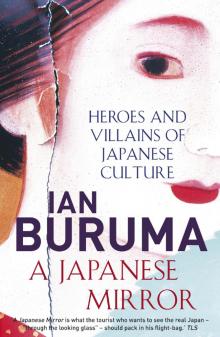 A Japanese Mirror
A Japanese Mirror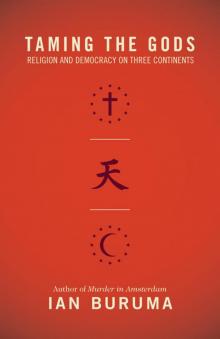 Taming the Gods
Taming the Gods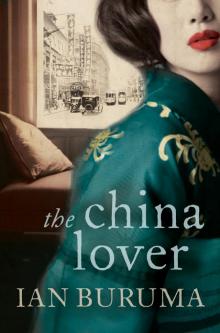 The China Lover
The China Lover A Tokyo Romance
A Tokyo Romance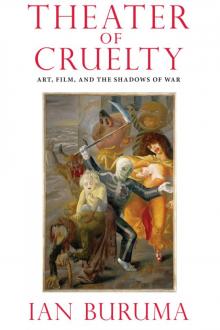 Theater of Cruelty
Theater of Cruelty Year Zero
Year Zero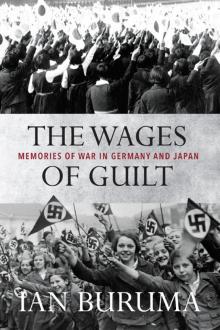 The Wages of Guilt
The Wages of Guilt Murder in Amsterdam
Murder in Amsterdam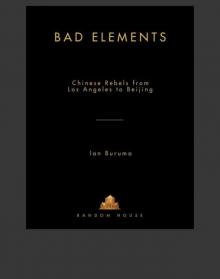 Bad Elements
Bad Elements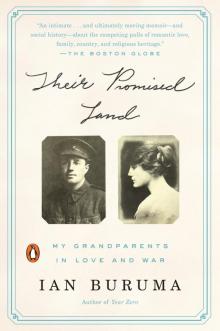 Their Promised Land
Their Promised Land Occidentalism
Occidentalism Anglomania
Anglomania Inventing Japan: 1853-1964 (Modern Library Chronicles)
Inventing Japan: 1853-1964 (Modern Library Chronicles) The Missionary and the Libertine
The Missionary and the Libertine